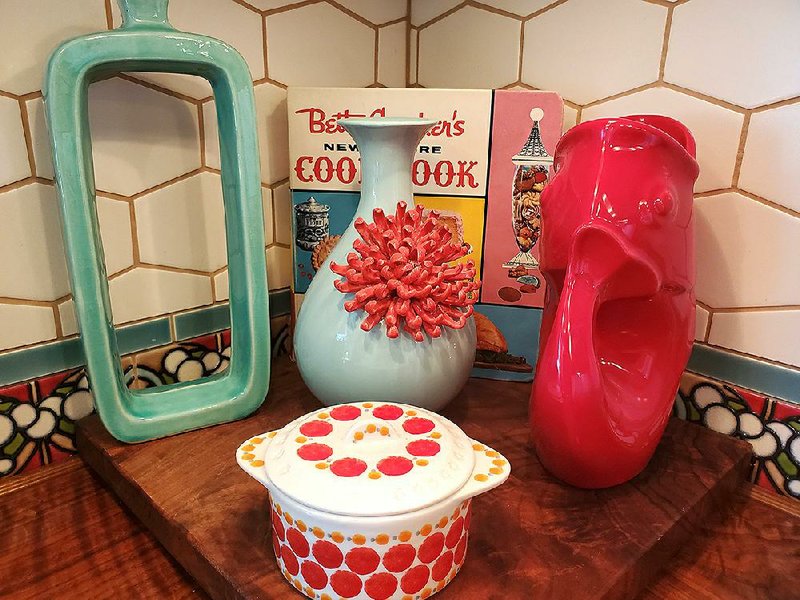It's just stuff, the decluttering experts and articles tell you. Well, I say, it's not just stuff. And now I have backup.
In fact, I will go as far as to say the word "just" doesn't belong in the same sentence as "stuff." This point came driving home to me boldfaced and underlined in sociologist Michelle Janning's book The Stuff of Family Life: How Our Homes Reflect Our Lives (Rowman & Littlefield 2017). How could I not pick up a title like that?
Here I thought I could talk about stuff, but Janning raises the discussion to a level higher than Snoop Dogg. While I'm playing tiddlywinks, she's playing four-dimensional chess.
Of course, you and I have always known that stuff matters. Anyone who has tucked a love letter in an underwear drawer, or saved a lock of hair knows that even though we don't need or use these items, there is simply no "just" about them.
Janning, a professor of sociology at Whitman College, in Walla Walla, Wash., has had a lifelong interest in home design. Combining her two interests into a book came naturally, she told me recently.
As she lusted over the interiors in home design magazines, she pondered the same questions I did, only more profoundly: Who can afford such expensive rugs? How do we decide what is beautiful? She then, unlike me, came up with actual answers.
"As sociologists, our job is to make what is invisible visible," she said. "We pick out behaviors that are so familiar people don't think about them, and ask why do people do that? Why did we as a society decide collectively to put items on mantels, or hang curtains, or have flush toilets?" I think I can field that last one.
"The very fact that we choose to buy decorative items for our homes, and display them shows we are participating in a social process," she said. "We are often actively trying to show our status, roles, and tastes, which play out in a larger cultural context," says her book. "Decorating a home is how we communicate our identity to others."
Geesh. And here I thought I was just trying to tie the throw pillows to the area rug.
Although much of her book and our conversation left me feeling very undeep, Janning made me think differently about the stuff in our homes, our connection to it, its meaning, and what it says about us. Grab a strong cup of something, and take a look at these examples:
On what your mantel says about you. "Most homes have a place in the public area for display, for the public presentation of self," Janning said. A mantel, bookcase, or table that displays family photos, travel souvenirs, status symbols, and pieces of art show the owners' taste and personality as they want you to see it." (I may need to reassess.)
On why it's so hard to leave a place we've lived in: Our homes are the site for the accumulation of biographical experiences, she writes. "That's what makes moving so hard for people who love the places they're leaving behind."
On what kids take to college: When leaving their childhood homes, many kids take with them "anchor" objects, she said. Some take stuffed animals, others, preferring to be less conspicuous about their childhood attachments, take a blanket, or family photos. While being careful about how much of their biographies they want on display, most take something to lessen the challenges of separating from a childhood home.
On what senior citizens take to retirement homes: Similarly, when adults move out of their family homes and into a retirement home or assisted living, taking familiar and meaningful possessions can provide supportive continuity and can be a solace. Recent research in gerontology has confirmed that holding onto cherished possessions in late-life transitions "can help people maintain a sense of identity when lots of elements of self are fading away."
On inherited possessions. A cherished object (note: not an avalanche of furniture) passed down to the next generation can be an important symbol of identity, connection and continuity across time. (If it's unwanted, this is me speaking again, it can also be a burden.) When adults inherit desired belongings, whether china, antiques, linens, letters or military medals, they see themselves as members of a family that has existed for generations. These items link them to history, ignite memories and fortify identity. Even using or displaying something as simple as a tea cup can be a stand in for a loved one, keeping us company long after that person is gone.
So what's it all mean? At the risk of sounding like a sociologist, here's what I learned: Nothing is nothing. That's something to ponder.
Syndicated columnist Marni Jameson is the author of five home and lifestyle books, including Downsizing the Family Home -- What to Save, What to Let Go
HomeStyle on 05/11/2019
